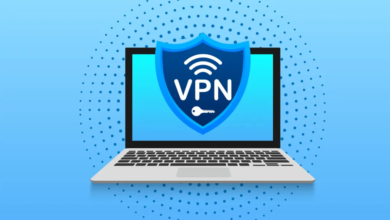
Zero Trust Security: What It Is and Why It Matters
In the ever-evolving landscape of cybersecurity, one term that has gained significant traction is “Zero Trust Security.” As cyber threats become more sophisticated and pervasive, traditional security models are proving insufficient. This blog aims to provide a comprehensive understanding of Zero Trust Security—what it is, why it matters, and how it can be implemented to enhance organizational security.
What is Zero Trust Security?
Zero Trust Security is a security model based on the principle of “never trust, always verify.” Unlike traditional security models that rely on a secure perimeter to protect assets, Zero Trust assumes that threats can originate both outside and inside the network. Therefore, it requires strict identity verification for every individual and device trying to access resources within the network, regardless of their location.
Key Principles of Zero Trust Security
- Verify Explicitly: Always authenticate and authorize based on all available data points, including user identity, location, device health, service or workload, data classification, and anomalies.
- Use Least Privileged Access: Limit user and device access to only what is necessary. Implementing least privileged access ensures that users and devices can only interact with the data and applications necessary for their roles.
- Assume Breach: Assume that a breach has already occurred or will occur, and design the security architecture to minimize the impact. This involves segmenting the network to contain potential breaches and continuously monitoring for suspicious activity.
Why Zero Trust Security Matters
1. Evolving Threat Landscape
The modern threat landscape is characterized by increasingly sophisticated cyber attacks, including phishing, ransomware, and advanced persistent threats (APTs). Traditional security models, which rely heavily on perimeter defenses, are inadequate against these threats because they do not account for internal threats or compromised credentials. Zero Trust Security addresses this gap by ensuring that every access request is thoroughly vetted.
Also Check
2. Workforce Mobility and Cloud Adoption
The rise of remote work and cloud computing has dissolved traditional network perimeters. Employees access organizational resources from various locations and devices, making it challenging to secure data using conventional perimeter-based approaches. Zero Trust Security is designed for this new reality, providing consistent security policies regardless of where users or resources are located.
3. Regulatory Compliance
Many industries are subject to strict regulatory requirements regarding data protection and privacy. Zero Trust Security helps organizations meet these requirements by providing robust access controls, continuous monitoring, and detailed audit logs, which are essential for demonstrating compliance.
4. Minimizing Insider Threats
Insider threats, whether malicious or accidental, pose a significant risk to organizations. Zero Trust Security minimizes these threats by enforcing strict access controls and continuously monitoring user activities, making it difficult for insiders to misuse their access.
Implementing Zero Trust Security
Implementing Zero Trust Security involves several steps and requires a comprehensive strategy. Here are the key components:
1. Identify and Classify Assets
The first step is to identify and classify all assets within the organization, including data, applications, devices, and users. This involves mapping out the network and understanding the flow of information.
2. Micro-Segmentation
Micro-segmentation involves dividing the network into smaller, isolated segments. This limits the lateral movement of attackers within the network, containing potential breaches and reducing the attack surface.
3. Multi-Factor Authentication (MFA)
Implementing MFA is crucial for verifying user identities. MFA requires users to provide multiple forms of verification, making it more difficult for attackers to gain unauthorized access.
4. Least Privilege Access
Ensure that users and devices have the minimum level of access necessary to perform their functions. This involves regularly reviewing and adjusting access controls based on the principle of least privilege.
5. Continuous Monitoring and Analytics
Deploy advanced monitoring tools to continuously analyze user behavior and network traffic for anomalies. This enables the detection of suspicious activities in real-time and allows for swift incident response.
6. Automated Threat Detection and Response
Leverage automation to detect and respond to threats quickly. Automated tools can analyze vast amounts of data and take predefined actions to mitigate risks, reducing the burden on security teams.
7. Zero Trust Network Access (ZTNA)
Implement ZTNA solutions to control access to applications and data based on dynamic policies. ZTNA provides secure, granular access to resources, regardless of the user’s location.
Challenges of Zero Trust Security
While Zero Trust Security offers numerous benefits, its implementation can be challenging. Organizations may face difficulties such as:
- Complexity: Implementing Zero Trust Security requires a thorough understanding of the network, assets, and data flows. It involves significant changes to existing security architectures and processes.
- Cost: The initial investment in Zero Trust technologies and the ongoing costs of maintaining and updating the system can be substantial.
- Cultural Resistance: Shifting to a Zero Trust model may face resistance from employees and stakeholders accustomed to traditional security models. It requires a cultural change within the organization.
Conclusion
Zero Trust Security represents a paradigm shift in cybersecurity, moving away from traditional perimeter-based defences to a more robust and resilient model. By continuously verifying every access request, enforcing least privilege, and assuming breach, Zero Trust Security provides a comprehensive approach to protecting organisational assets in the modern threat landscape. Despite the challenges, the benefits of enhanced security, regulatory compliance, and reduced risk of insider threats make Zero Trust Security a critical consideration for organizations aiming to safeguard their digital environments.








